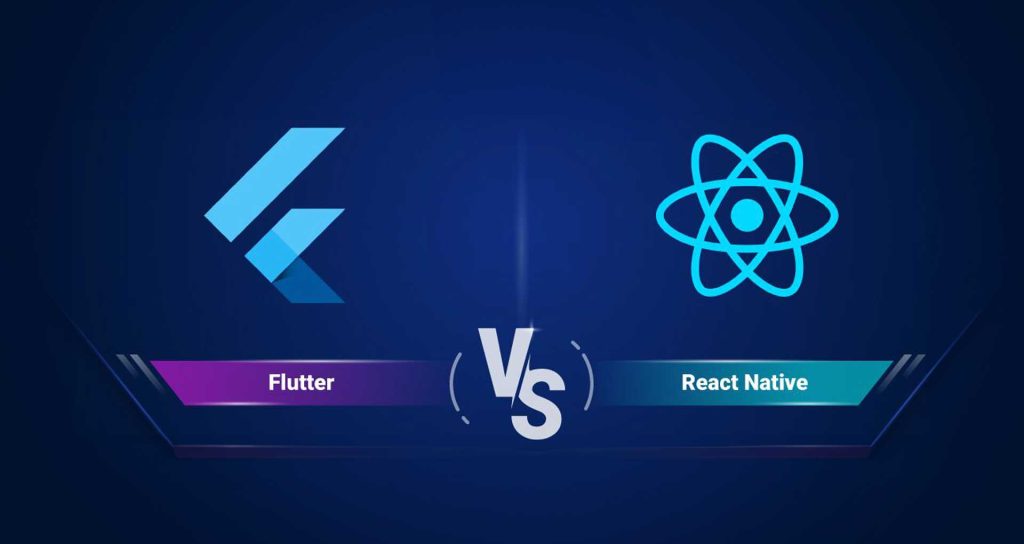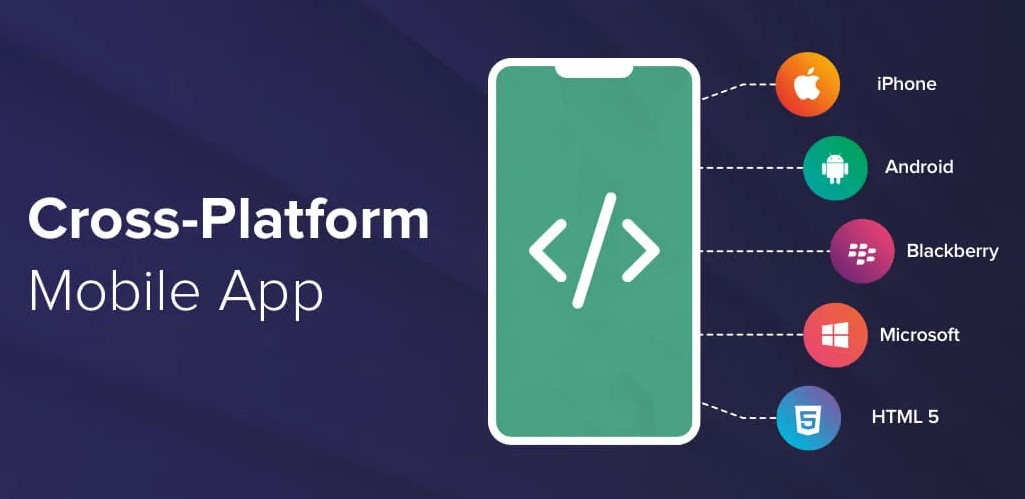Flutter vs React Native (2025): Which Is Better for Cross-Platform Apps?
Which Should You Choose in 2025?
The decision between React Native vs Flutter in 2025 is no longer about “which one works” — both frameworks are proven, mature, and production-ready. Instead, the choice depends on your team composition, product vision, and long-term roadmap.
- If you need speed-to-market and have existing JavaScript/React talent, React Native is the pragmatic choice. With its Bridgeless New Architecture and JSI, plus TypeScript now default in version 0.76, React Native has smoothed out many of its historical performance gaps.
- If you’re building a pixel-perfect, consistent UI across platforms, Flutter leads the way. Its Impeller renderer and Material 3 integration deliver high-fidelity experiences that look identical on iOS, Android, and beyond.
- For complex, animation-heavy enterprise apps, Flutter’s canvas-based rendering gives you tighter control and performance stability.
- For teams needing reuse across web, desktop, and mobile, React Native integrates more naturally with existing JavaScript/TypeScript stacks.
Still not sure? Teaser Software offers a free 30-minute framework assessment tailored to your product’s needs.

What They Are
Before diving into architecture and performance, let’s quickly clarify what these frameworks actually are in 2025
What Is React Native (2025)?
Originally created by Meta, React Native is a JavaScript-based framework for building native mobile apps that look and feel like they were coded separately for iOS and Android.
In 2025, the framework has matured massively:
- The Bridgeless Architecture and JSI allow JavaScript to communicate directly with native modules — no more lag from the old bridge.
- TypeScript is now standard, giving apps better type safety and predictability.
- The tooling ecosystem (Expo SDK 51+, Flipper, Hermes 2) makes development faster, debugging easier, and CI/CD smoother.
Big tech players still trust it — Instagram, Walmart, Coinbase, and Uber Eats run core experiences on React Native.
That proves one thing: React Native is battle-tested at scale and ready for the enterprise age.
What is Flutter?
Flutter, developed by Google, is a UI toolkit that renders everything on its own canvas rather than using native components.
Its new Impeller renderer offers smoother GPU performance and battery efficiency, and its Material 3 integration gives developers a consistent look across platforms.It’s great for design-system-heavy apps that must look identical everywhere. However, its approach means you’re decoupled from native platform evolution — each iOS or Android update requires manual catch-up work in Flutter.
Architecture & Rendering — The Fundamental Split
This is where React Native pulls ahead in 2025.
Flutter renders everything on its own canvas. That’s why its UI looks identical on every device — but also why it can feel out of sync with the latest iOS or Android visual changes. Every system update means extra engineering effort to maintain parity and accessibility.
React Native, on the other hand, embraces native rendering. It connects JavaScript logic directly to OS-level components via JSI, so your app automatically inherits new native animations, transitions, and accessibility features as they arrive.
That means React Native apps age better. They stay visually current and compliant without constant framework-level maintenance.
| Aspect | React Native (2025) | Flutter (2025) |
| Rendering | Uses real native components via JSI (Bridgeless) | Renders on its own canvas |
| UI Updates | Auto-syncs with OS evolution | Manual updates for new UI patterns |
| Accessibility | Inherits native APIs | Must re-implement each change |
| Look & Feel | Platform-authentic UI | Pixel-perfect uniform UI |
For enterprises operating in regulated sectors (fintech, healthcare, public services), React Native’s native parity also simplifies compliance with ADA and WCAG accessibility standards.
Flutter gives you control over every pixel. React Native gives you control over your future maintenance and native evolution — and that’s the control that actually saves money long-term.

Performance in 2025 — Bridgeless React Native Levels the Playing Field
Performance has always been the headline debate in “Flutter vs React Native.”
But in 2025, that story has changed — dramatically.
React Native’s Bridgeless Architecture, combined with JSI (JavaScript Interface), has closed the historical gap that once gave Flutter a lead.
The result? Native-level responsiveness, faster cold starts, and smoother UI threads — without rewriting everything in Dart.
Benchmarks from enterprise deployments show:
- Up to 40% lower latency on UI-heavy interactions.
- Fewer dropped frames during animations or transitions.
- Hermes 2 engine improving memory efficiency and runtime stability.
- Concurrent rendering enabling React Native to better utilize multi-core CPUs on modern devices.
In other words: React Native is no longer “almost native.”
It is native — just with a JavaScript brain.
Flutter’s Impeller still offers top-notch GPU performance and excels in graphics-heavy apps like automotive dashboards or 3D-rich visualizations. But for most mobile apps — social, e-commerce, finance, delivery — React Native’s new runtime achieves near-identical FPS and smoother business logic execution.
React Native also integrates seamlessly with native modules, letting teams optimize only where it matters instead of maintaining an entire custom rendering pipeline.
Flutter wins in niche, graphics-heavy use cases. But for 90% of modern mobile apps, React Native’s Bridgeless performance is more than enough — and easier to scale, debug, and maintain.
Ecosystem, Packages & Community Health
Both frameworks are thriving — but the DNA of their ecosystems reveals who’s thinking long-term.
React Native’s npm Universe — Breadth, Depth, and Maturity
React Native rides on the back of npm, the largest open-source registry in the world. That means:
- You can find packages for anything — from analytics SDKs to Stripe payments, Maps, and Firebase.
- There’s deep integration with React, TypeScript, and Next.js ecosystems.
- The community includes tens of thousands of contributors, corporate sponsors, and maintainers from Meta, Microsoft, Shopify, and beyond.
While package quality can vary, established engineering teams mitigate that with SCA (Software Composition Analysis) and internal wrappers — a small trade-off for the world’s most flexible codebase ecosystem.
Flutter’s pub.dev has improved rapidly, and its official Google plugins are top-tier. However, the ecosystem remains more centralized — great for stability, but slower for innovation.
React Native’s open nature, in contrast, ensures continuous evolution, new integrations, and enterprise-level tooling.
That’s why more CI/CD platforms, monitoring tools, and A/B testing suites support React Native first.
If your product roadmap depends on rapid integration, third-party SDKs, and DevOps flexibility — React Native’s ecosystem gives you more freedom to move, faster.

Talent Availability & Hiring Reality — The Business Advantage of React Native
In cross-platform development, your framework is only as good as the people who can build with it.
And here’s where React Native dominates.
The Talent Pool
React Native taps into the largest developer base in the world — JavaScript and React.
That means:
- Easier hiring and onboarding.
- Lower long-term salary pressure.
- Faster access to experienced contractors and outsourcing partners.
There are hundreds of thousands of engineers who can move from React web apps to React Native mobile development with minimal upskilling.
This reduces risk, accelerates MVPs, and allows internal teams to grow organically instead of depending solely on niche hires.
Flutter, by contrast, relies on Dart, a capable but far less common language.
While Flutter developers are skilled and in demand, the limited pool increases hiring lead times and salary costs — especially in emerging markets.
Outsourcing Perspective
At Teaser Software, we’ve seen this dynamic play out firsthand.
Companies that choose React Native benefit from:
- Larger recruitment pipelines.
- Quicker ramp-up times.
- Easier collaboration with web teams sharing design systems and APIs.
Our dedicated pods (PM, Tech Lead, Developers, QA, DevOps) help clients bootstrap React Native projects while mentoring internal engineers — a hybrid model that balances speed and sustainability.
Outsourcing Tip: Outsource to accelerate, not to replace. Teaser’s React Native teams integrate with your workflow, enabling you to retain product knowledge while scaling faster.
Flutter talent is growing, but React Native talent is already everywhere.
For CTOs, that means faster delivery, lower risk, and smoother scaling — critical advantages in competitive markets.
Use Cases — Real-World Clarity (Not Generic Advice)
By 2025, both frameworks are reliable, but they shine in different arenas.
Let’s move beyond vague comparisons and focus on where React Native truly delivers value.
Choose React Native if you…
- Already have a React web app or JS-based stack. You’ll reuse your code, your state management logic, and even parts of your UI components.
- Need speed-to-market for MVPs or new product launches. React Native’s npm ecosystem, Expo CLI, and over-the-air updates make deployment lightning-fast.
- Care about OS consistency and compliance. Because React Native uses native components, your app automatically stays aligned with evolving iOS/Android visual standards and accessibility guidelines.
- Want to scale across platforms — web, desktop, and mobile — without fragmentation.
Choose Flutter if you…
- Are building animation-heavy or design-driven products that must look identical across all screens (e.g., media, gaming, custom dashboards).
- Want a fully controlled design system, independent of platform look-and-feel.
- Can invest in specialized Dart talent for deeper UI optimization.
If your app’s core value lies in user experience consistency — Flutter is strong.
If your business value lies in scaling, integrating, and shipping fast with real-world talent — React Native is the clear winner.

Cost, Time-to-Market, and ROI
From a business lens, React Native consistently delivers a better ROI due to its ecosystem and workforce advantages.
- Shared skillsets = lower cost. Your existing React or JavaScript team can pivot to mobile development without rebuilding from scratch.
- Reduced time-to-market. React Native’s build pipelines (EAS, Expo, Fastlane) and npm libraries eliminate weeks of setup and integration time.
- Long-term savings. Native updates and accessibility improvements roll in automatically — reducing ongoing maintenance costs.
Flutter’s strength is in visual perfection, but that comes with trade-offs:
- You’ll often need more senior engineers to maintain performance consistency across devices.
- Each new OS release can require patching or manual re-theming to stay current.
Both frameworks save roughly 30–40% in initial cost versus fully native development — but React Native’s operational flexibility compounds savings across the product’s lifecycle.
Flutter may win early beauty contests. React Native wins in scalability, team economics, and lifecycle cost efficiency — the metrics that actually matter for CTOs and founders.
Risks & Trade-offs — The Reality Check
Every framework has trade-offs, and choosing React Native or Flutter should depend on your roadmap maturity.
| Risk Area | React Native | Flutter |
| OS parity | Updates instantly with iOS/Android | Requires manual UI sync |
| Talent availability | Large, global, cross-functional | Smaller, higher-cost pool |
| Rendering stability | Native rendering, adaptive | Canvas rendering, stable but isolated |
| Enterprise tooling | Deep ecosystem (EAS, Expo, App Center) | Growing, Google-driven |
| Migration risk | Backed by Meta, broad contributor base | Dependent on Google roadmap |
Key insight: Flutter’s roadmap depends heavily on Google’s priorities, which can shift (as seen with Angular, Fuchsia, and other projects).
React Native’s evolution, in contrast, is community-driven — supported by Meta, Microsoft, and a massive open-source ecosystem. That gives it staying power far beyond corporate sponsorship.

Outsourcing with Teaser Software — Your Shortcut to Clarity
At Teaser Software, we’ve helped startups and enterprises make the right call between Flutter and React Native — and deliver real results.
Our discovery sprint model gives you clarity before you commit:
Discovery Sprint (2–3 weeks)
- Assess your business and technical needs.
- Run side-by-side PoC (Proof of Concept) builds on React Native and Flutter.
- Benchmark UI performance, integration speed, and code reusability.
Delivery Model
- Dedicated pods with PM, Tech Lead, Developers, QA, and DevOps.
- Knowledge transfer built in — so your internal team learns alongside ours.
SLAs & KPIs
- Cycle time and crash-free session targets.
- App size & performance budgets.
- Continuous feedback loops for measurable improvement.
Conclusion — Why React Native Wins the 2025 Race
Both Flutter and React Native have matured into powerful frameworks. But when you factor in:
- Performance parity (thanks to Bridgeless + JSI),
- Broader talent availability,
- Easier maintenance and native evolution,
- And a thriving ecosystem that scales across the web and mobile,
…it’s clear why React Native stands as the strategic, future-proof choice for 2025 and beyond.
If your app demands speed, flexibility, and team scalability → React Native is your pragmatic winner.
If your app demands custom animations and perfect visual control → Flutter is still a strong alternative.
Ultimately, the best decision comes down to context — and that’s where Teaser Software can help you decide with confidence.
Ready to decide?
Book your free framework consultation with Teaser Software today.
Our cross-platform experts will help you align technology, timeline, and team to build the right app the first time.

